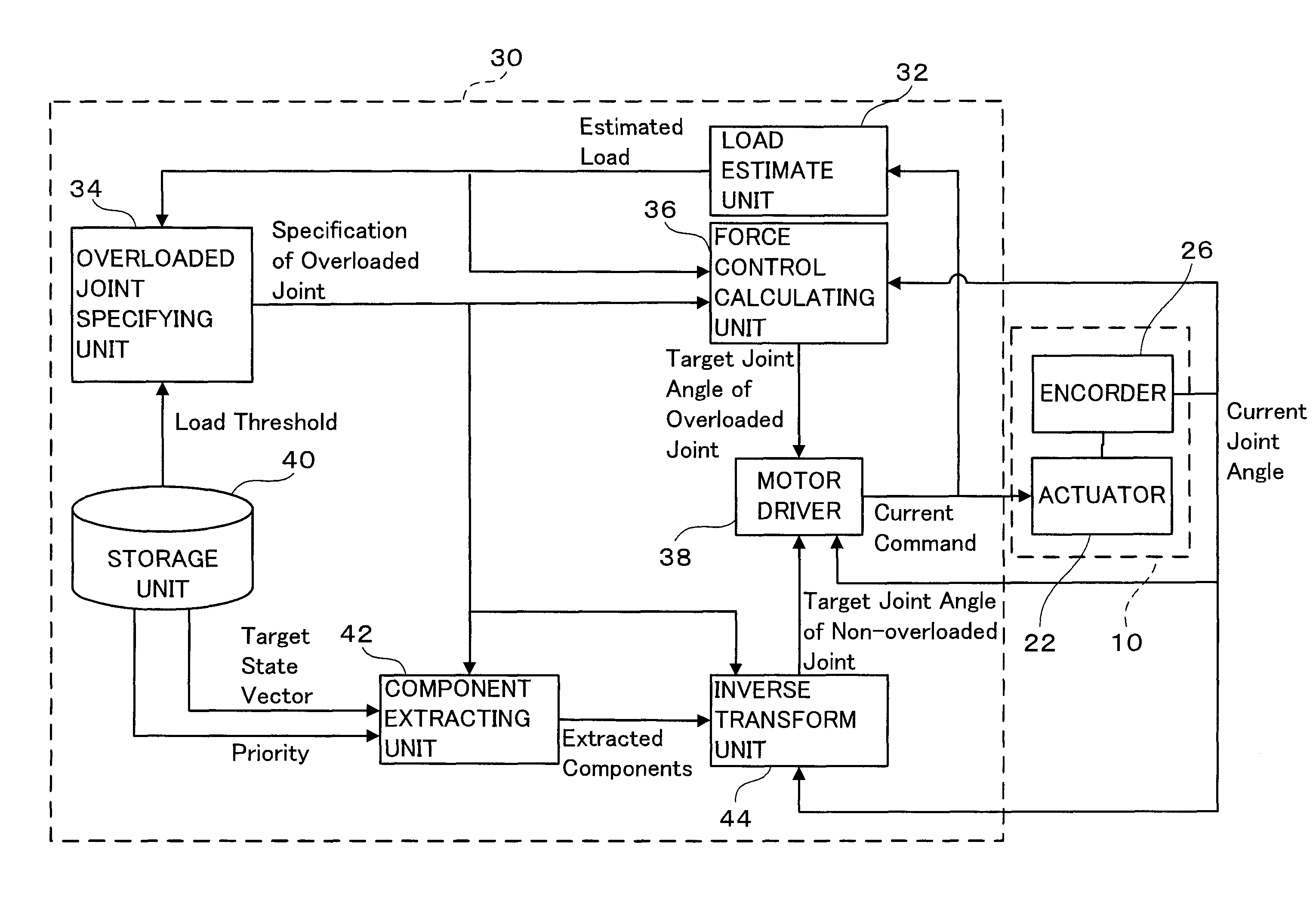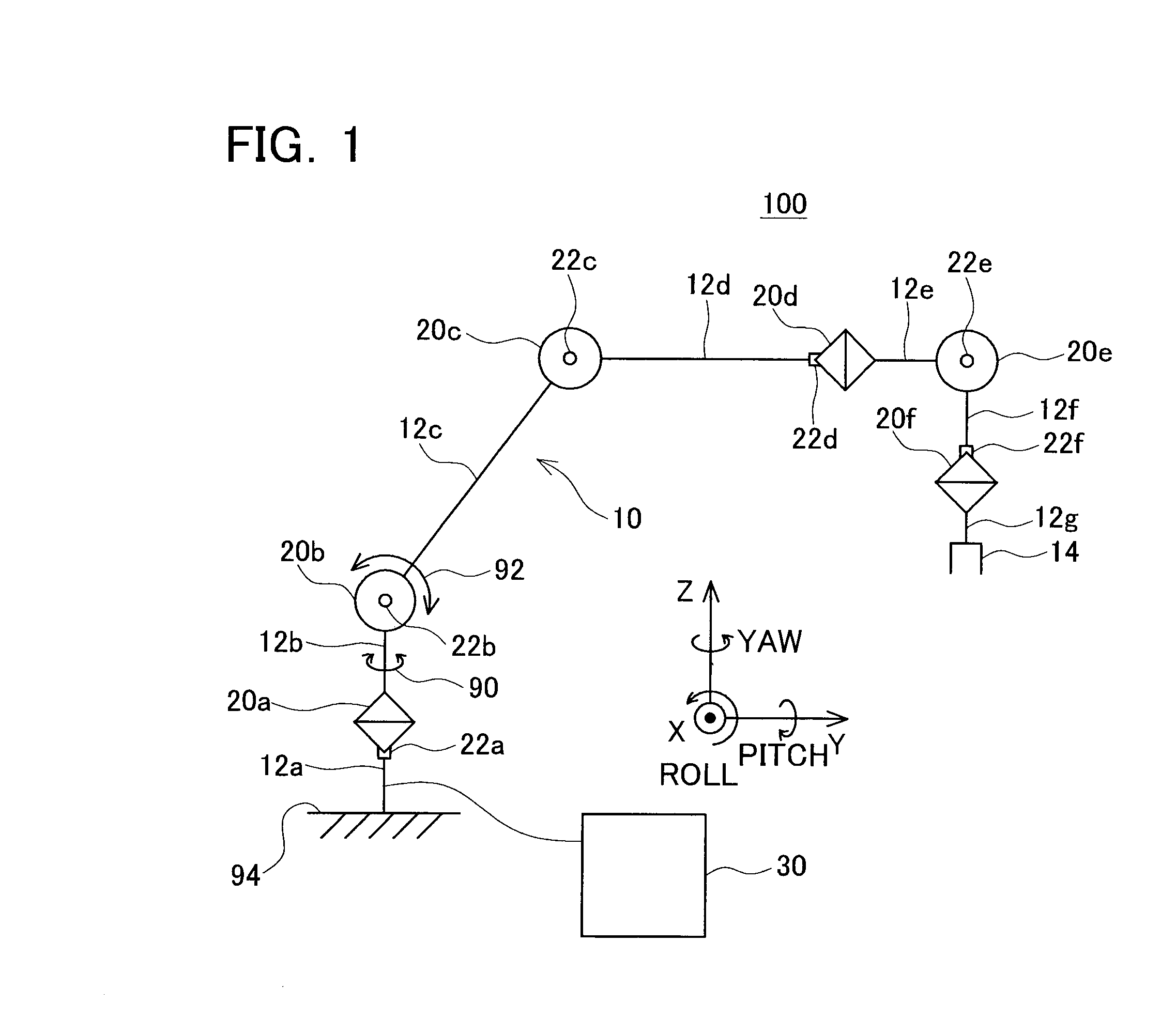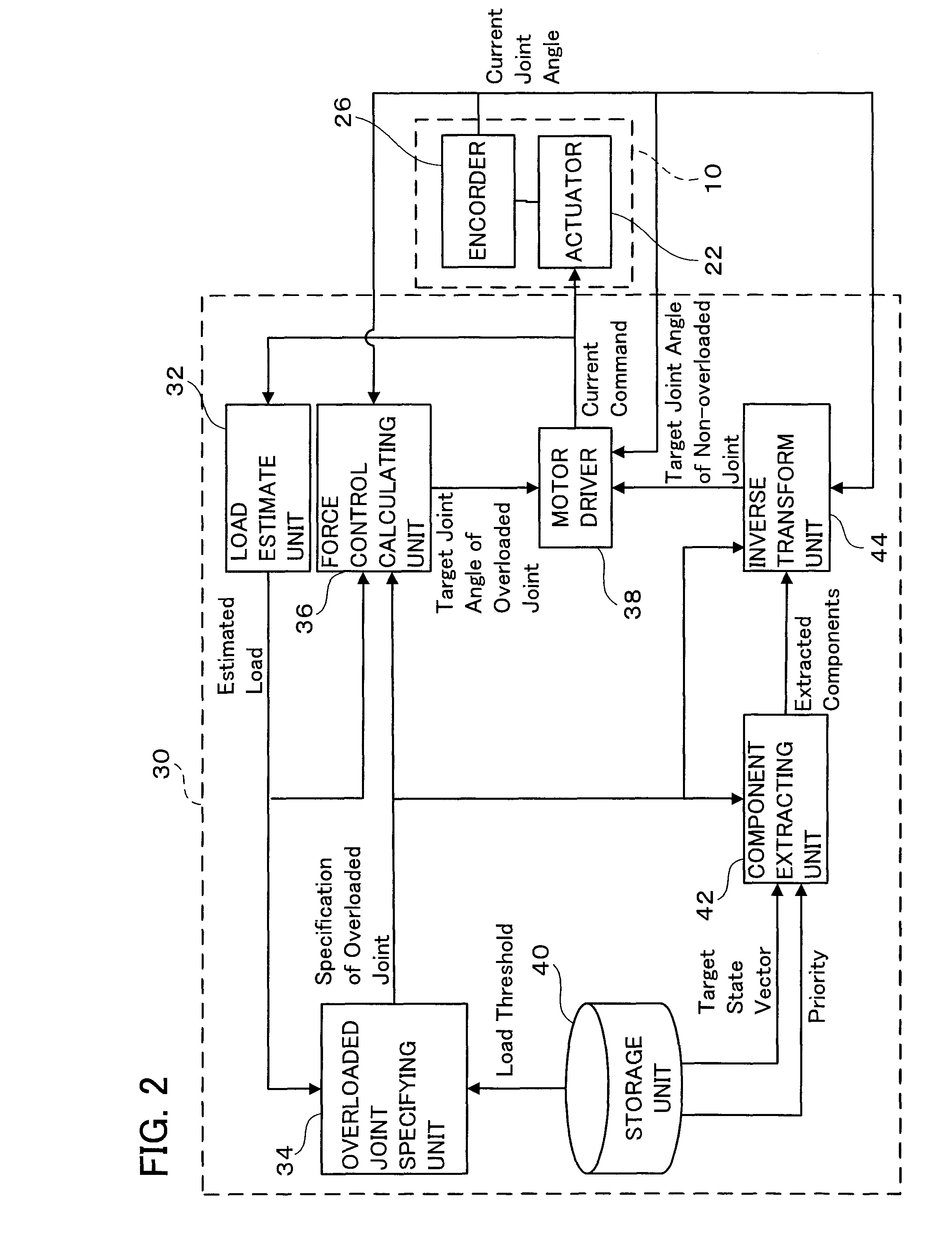Multi-joint robot and control program thereof
a multi-joint robot and control program technology, applied in the direction of computer control, program control, instruments, etc., can solve the problems of not being able to follow the corresponding components of the current state vector of the end link, and the inability of the joint to be controlled based on the target drive quantity, so as to ease the overloaded state
- Summary
- Abstract
- Description
- Claims
- Application Information
AI Technical Summary
Benefits of technology
Problems solved by technology
Method used
Image
Examples
first embodiment
[0061]The multi joint robot of the first embodiment will be described with reference to the drawings. FIG. 1 shows a schematic view of a multi joint robot 100. The multi joint robot 100 includes a robot mechanism 10 (multi-joint robot mechanism) and a controller 30. FIG. 1 illustrates the robot mechanism 10 with a skeleton diagram showing the coupling structure of the joints and links. The multi-joint robot 100 in this embodiment holds a glass filled with water (not illustrated) located at an initial position with a gripper 14, and performs a glass moving work to place the glass at an intended position with an intended attitude. The multi-joint robot 100 in this embodiment is able to continue, under a circumstance in which the magnitude of a load torque acting on a joint exceeds a preset threshold during the glass moving work, the glass moving work to as much extent of feasibility by using the remaining joints, while controlling to reduce the load with regard to the joint of which t...
second embodiment
[0088]The second embodiment will be described hereinafter. FIG. 4 shows the block diagram of a multi-joint robot relating to the second embodiment. FIG. 4 applies the same reference numerals to the same components as those in the block diagram in the first embodiment illustrated in FIG. 2. The descriptions of the components with the same reference numerals applied to FIG. 2 will be omitted.
[0089]The robot mechanism 10b of the multi joint robot relating to the second embodiment has a force sensor 28 on the end link (the seventh link 12g in FIG. 1). The components other than the force sensor 28 are the same as those of the robot mechanism 10 in the first embodiment, and the descriptions thereof will be omitted. The force sensor 28 is installed between the end effector 14 (refer to FIG. 1) and the end link of the robot mechanism 10b. The force sensor 28 detects the external force acting on the robot mechanism 10b through the end effector 14.
[0090]The controller 30b in the second embodi...
third embodiment
[0093]Now the third embodiment will be described. The first embodiment and the second embodiment have used the inverse transform formula for determining the target joint angle of the non-overloaded joint. In the third embodiment, the target value (target drive quantity) for controlling each joint is the joint angular velocity, and the target state vector is expressed by the target velocity of the end link (velocity in the direction of each of the x, y, and z axes in the coordinate system in FIG. 1, roll angular velocity, pitch angular velocity, and yaw angular velocity). When an overloaded joint does not exist, the multi-joint robot in the third embodiment is controlled by the so-called resolved motion rate control. This embodiment applies the resolved motion rate control to determining the target value (angular velocity) of the non-overloaded joint. This embodiment refers to FIG. 2 as to the block diagram of the multi-joint robot. However, the inverse transform unit 44 in FIG. 2 is...
PUM
 Login to View More
Login to View More Abstract
Description
Claims
Application Information
 Login to View More
Login to View More - R&D
- Intellectual Property
- Life Sciences
- Materials
- Tech Scout
- Unparalleled Data Quality
- Higher Quality Content
- 60% Fewer Hallucinations
Browse by: Latest US Patents, China's latest patents, Technical Efficacy Thesaurus, Application Domain, Technology Topic, Popular Technical Reports.
© 2025 PatSnap. All rights reserved.Legal|Privacy policy|Modern Slavery Act Transparency Statement|Sitemap|About US| Contact US: help@patsnap.com



